What Is Visual Identity?
A visual identity is the combination of design elements people use to recognize your company.
In general, your visual identity is composed of the brand’s overall aesthetic, use of colors, logo, brand name, typography, and smaller visual elements. These components, while minor on their own, can create a major impact on your brand identity when combined strategically. One example of a visual identity champion is McDonald’s. From their iconic arches to their color palette, they are a globally recognized brand. They’ve created a visual identity that isn’t limited by language or cultural boundaries.

Memorable, recognizable, and admirable are the three central goals of a strong brand identity. But of course, that’s easier said than done. Your visual identity should always be considered in context to your competitor set. If you’re a fast-food chain, McDonald’s red and yellow should probably come off the table. But if you’re an emerging tech company, those colors may be a great opportunity to differentiate in your industry! Consider working with a reputable branding and marketing agency, such as Bluetext, to run a full competitive analysis and to ensure you have a well-planned out brand that you can consistently maintain.
Why Is It Important?
A well-defined visual identity allows you to ensure all your brand designs support your company and its overall business goals. In creating a visual identity, you’ll want to ensure you choose a logo, color palettes, fonts, visuals, and design style that fits the way you want your company positioned in the market. Are you looking for approachability? Maybe you want to be perceived as more aggressive in price or quality. All of these brand attributes can be strengthened with visual elements. Beyond defining these individual elements, you’ll want to ensure they are cohesive and can be used consistently.
By creating a consistent and well-defined visual identity you become more memorable and recognizable for your customers.
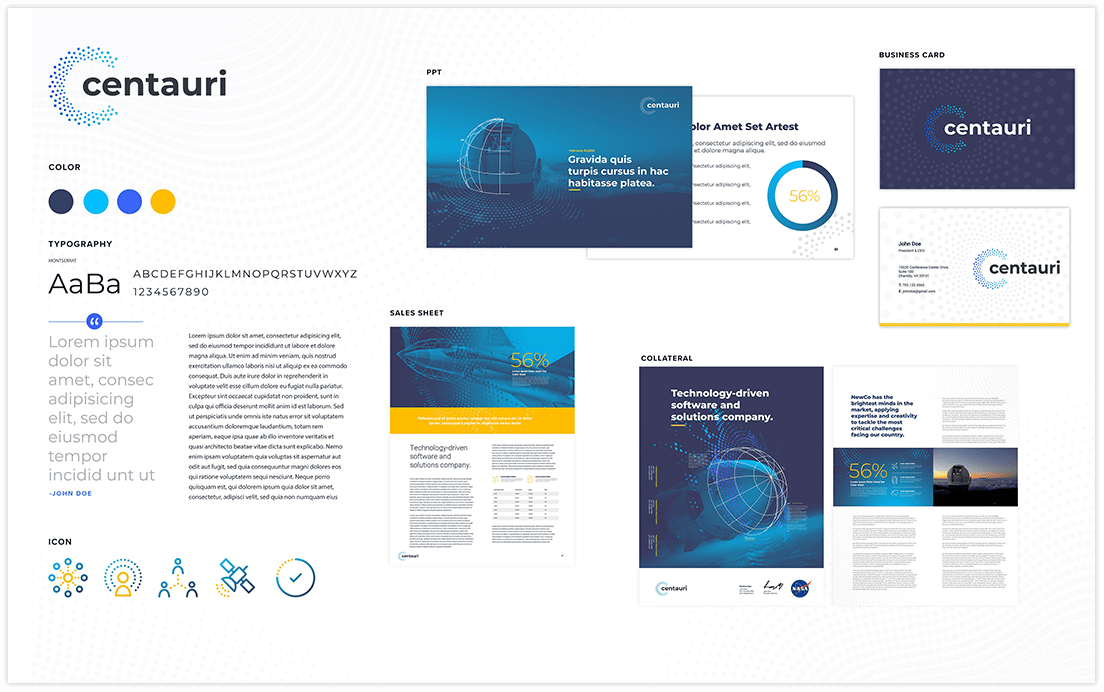
In developing your visual identity, there are countless free checklists and templates to utilize. But a word of caution, nothing can replace the creativity of a top-quality graphic designer. The good news? Bluetext has a full design team that’s ready to assist you every step of the way in developing your company’s visual identity.
Do you really want your brand to stand out? Then consider a custom font. Companies such as Netflix, Google, Apple, and the BBC all utilize custom fonts to help stand out from the competition while increasing their recognizability. Just ensure your custom font meets accessibility standards. Decorative or overly stylized fonts can often be difficult to read even for users without visual impairments or reading disabilities.
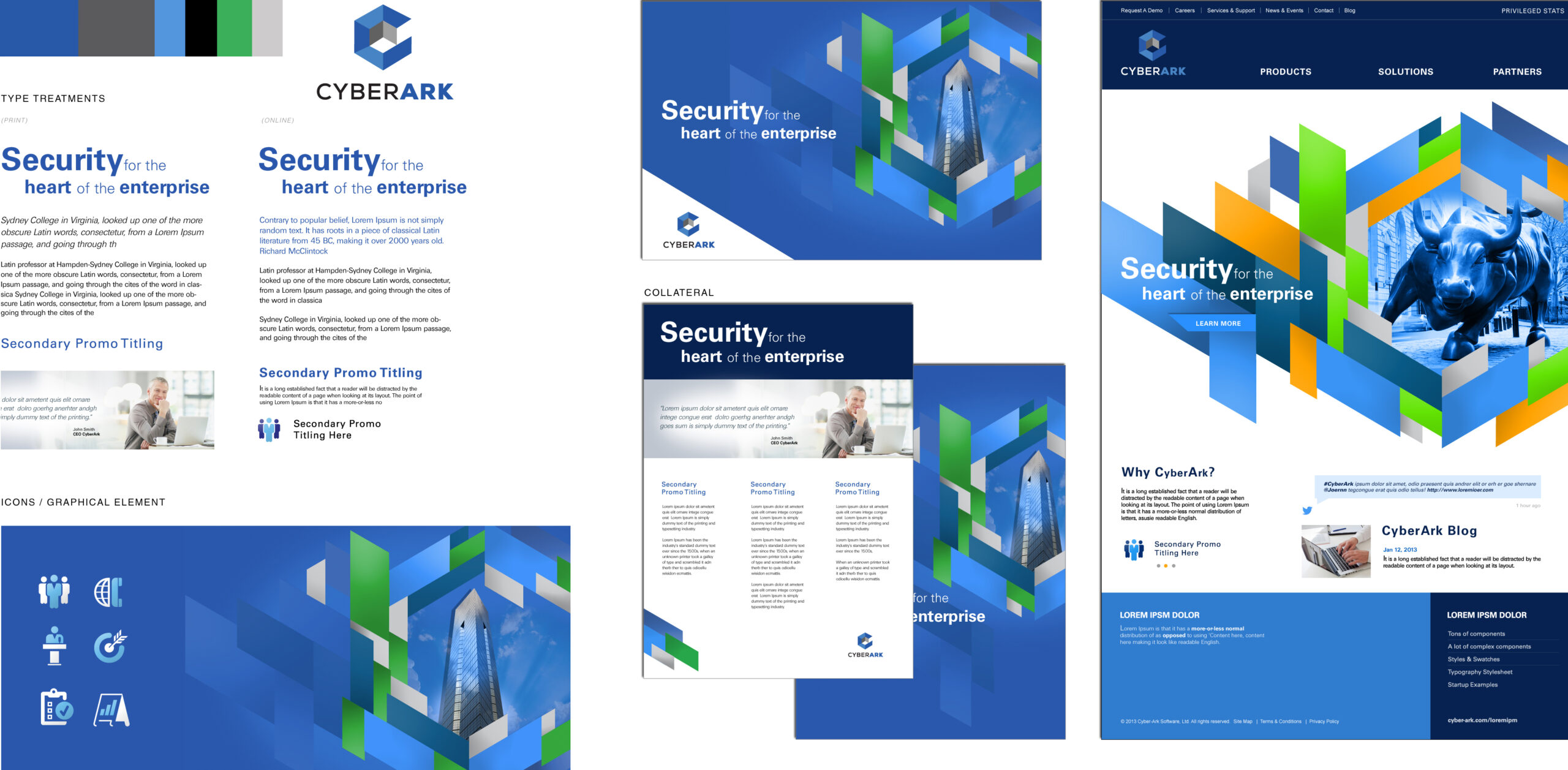
Key Elements of a Visual Identity
So where do you begin building a strong visual identity? This is far from an all-encompassing list, but here are the top elements Bluetext suggests you start with. Keep in mind, the priority elements may vary based on the platform and the brand. For example, the specific visual identity elements needed for an app for a global brand will be different from what’s needed for a regional-sized company’s desktop site.
That being said, here’s a concise list of elements Bluetext considers cornerstone in a brand identity:
- Logo: Essential for every business. Your logo is one of the first elements users will notice, so you need to make sure it’s memorable.
- Color Palette: Defining your band’s color palette increases consistency across your brand.
- Fonts: Again, a consistent font is essential. Whether it’s a set of free fonts or custom fonts, make sure they reflect your business’ goals.
- Visuals: From iconography to images, ensuring they align with the rest of your visual identity is essential.
- Design Style: Whether its modern, eclectic, or industrial, sticking to one design will increase coherence between all your visual identity elements.
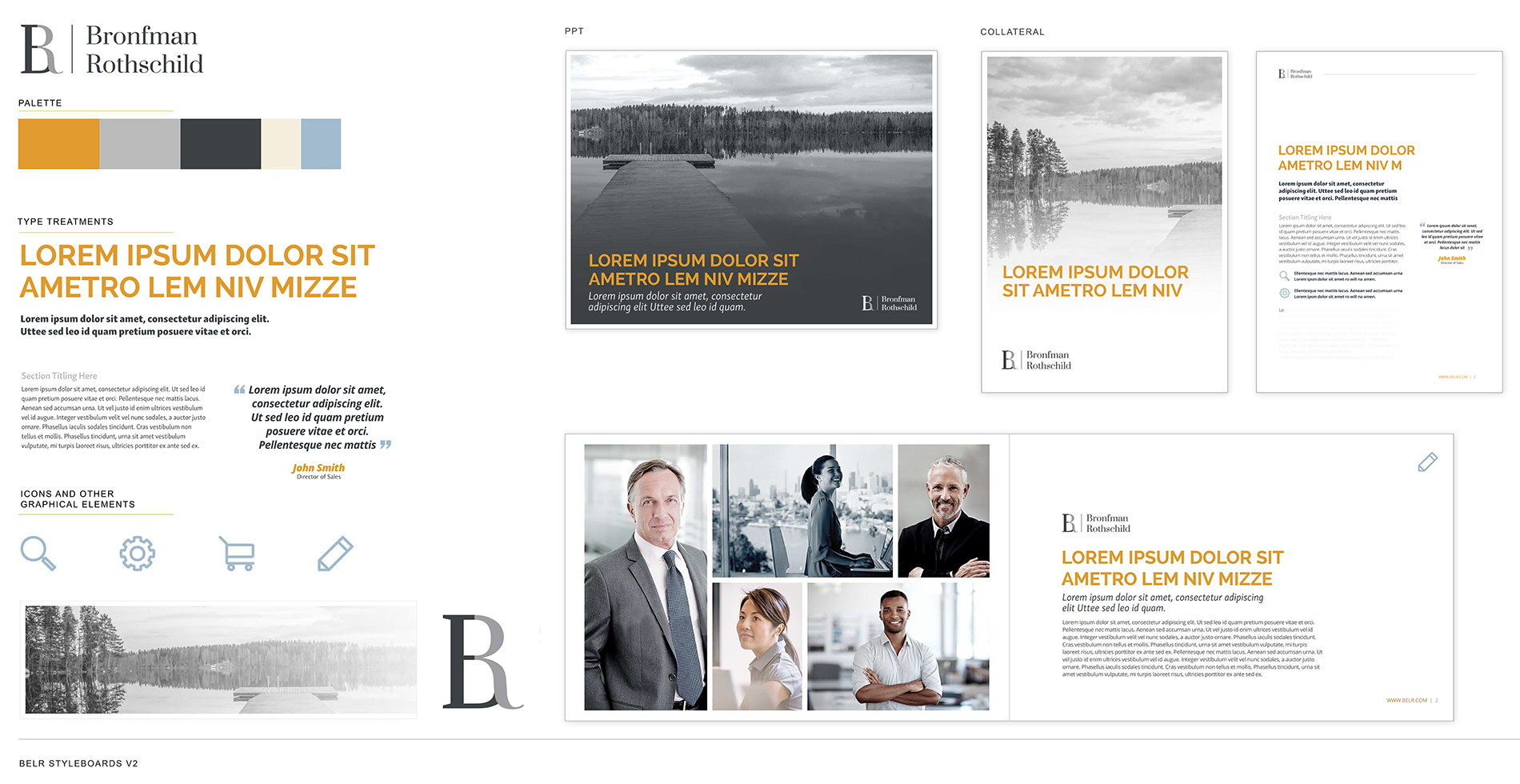
Creating Your New Visual Identity
A good place to start in any rebrand? Consider looking at other notable companies, within and outside your own industry! There is brand inspiration all around us, so next step; ensure the success of your new brand by enlisting the help of a professional, such as Bluetext. A branding agency can take your list of brand inspirations, along with creative field trip and industry-backed insights to help guide you through every step of the way.
One of the biggest takeaways is to ensure each element supports each other and thus the overall visual identity. The other most important takeaway is to ensure you consistently use your visual identity across all branding opportunities to set your company up for success.
The recent COVID-19 outbreak has had ripple effects across almost every industry. Around the world, the global pandemic has altered the way we live, socialize and even conduct business. In this unprecedented scenario clouded with uncertainty we all, especially digital marketers, are wondering: What needs to change? And how drastically?
When it comes to search engine optimization strategies, digital marketing and content agencies are continually researching the latest trends and evolving best practices. In the current environment, the role of a top digital marketing agency is to keep a pulse on the present, while also looking forward to strategies that will drive long-term success. Here at Bluetext, our digital marketing analysts are harnessing a variety of tactics to support overall business goals and serve users the best we can during these uncertain times. Check out the top ways we’ve been monitoring and optimizing around current events.
Strength in Numbers
When in doubt, trust the data! Using top marketing analytical tools, such as SEMRush and Moz, one can track the aggregate behavior of online users. Gathering the most up to date data can be tricky, so don’t do it alone. The more expertise and tools, the better. Trust a marketing analytics agency to help break down the numbers into a comprehensible story of website traffic. Use professional tools, such as Google Analytics and Google Search Console, to monitor the recent fluctuations in your page traffic. Do a keyword analysis of your current keyword list to see if search volume has shifted. Google Trends page is a great tool to identify emerging patterns. Are there new phrases your customers are searching for? If the language has evolved, so should your SEO strategy. If you have chatbots for customer service transcripts, these can provide valuable insight into current needs.
In short, the data doesn’t lie. Businesses need to understand search traffic shifts to get as clear as possible a picture into whether to pivot your SEO strategy or not.

Content is King — Still
Ultimately any changes to your SEO strategy should be driven by your unique business needs. For example, a brick and mortar store will need to cater to how they can serve customers at home. If your business was already available online, you may be experiencing altered user behavior as people spend more time at home and online. Every business should ask: “Is the content relevant to current needs?” Your messages may need to shift in sensitivity to the current environment. A complete overhaul is not necessary, nor appropriate. However, if there are opportunities to generate new content that supports your users in a unique time, do so. And if your business is considered essential or has been significantly impacted, you should create a dedicated page to capture all relevant coronavirus traffic. Keep the page simple, focused and sensitive. Don’t try to provide the latest breaking news, but exactly what and how your company is doing. If your business has been minimally affected, perhaps there is an opportunity to contribute to emerging conversations. Exploding Topics is a valuable tool for up-to-date trends across search engines and social media mentions. At the end of the day, users are seeking timely and accurate information now and long after the dust has settled on this pandemic.
 Optimize Often
Optimize Often
Search engine optimization is never a “one and done” task. Any digital marketing strategy requires upkeep as is the nature of the evolving industry. Now, more than ever, flexibility is paramount to staying afloat. Be proactive, be vigilant. SEO strategy will need re-evaluation in the upcoming weeks and months. No one can predict how long the pandemic will last so you must be ready to pivot to any new or resurging customer needs.
In an unpredictable environment, one thing is certain: this is our new (remote) reality. Don’t expect old strategies to work as they once did, and don’t expect this shift to “blow over soon”. Your business should be prepared to remain relevant now more than ever. There will likely be long term implications in behaviors and business operations. Get behind the shifts now and flex your agility. It will pay off in your long term business health.
If you’re looking to partner with an agency to pivot your SEO strategy, let us know.
It’s rare for a business to offer its services for free. The phrase “there ain’t no such thing as a free lunch” reigns true in most industries and all business decisions. Originating with early-century saloon owners marketing free, salty lunches as a way to entice beer drinking, even the etymology of the #TNSTAAFL phrase foreshadows the destiny of commerce itself – it’s impossible to get something for nothing.
So, what does a free ham sandwich in 1891 have to do with 2020 content marketers and gated thought leadership? Imagine your business is the bar and that hungry and thirsty passerby out front is the CMO searching for a way to convince their boss on more paid media dollars, or a CTO who needs a VPN alternative. You have something they could want – a delicious, frothy piece of premium content to quench their industry-specific questions. Post that “Free Lunch” sign, give them some snacks, and then charge them for the beer to wash it all down. You’ll have a bar full of returning customers every time.
You Want to Be a Thought Leader?
Let’s break it down. Businesses that are trying to establish themselves as thought leaders in their space usually have two types of content: Blogs and premium content. Typically, you want to spend your time on the premium content first and then chop it up into free digestible portions, which become your blogs. Since the blogs are free and busting at the seams with the same SEO juice that you prioritized in your premium content, both should come up as a result when someone is looking online for an industry-question you have the answer to.
Think about the last time you were researching B2B tactics. You wouldn’t hand over your email address to just anyone at the beginning of your research. You browsed around to see who knows what they’re talking about. Once you found a credible thought leader, then you actually started paying attention to what they were talking about.
Economy vs. Premium Content
According to content marketing agencies, balance is key. The trick is to walk the line between having free ungated blogs that are enticing and helpful to draw traffic but not too helpful and giving away a company’s expertise without gaining any leads. Save the premium advice and info for the premium content. Ask yourself, “Would someone reasonably pay for this service?”
Make it exclusive, insightful, and urgent. Typically, premium content are eBooks, courses, webinars, checklists, and sometimes videos. Those resources take a lot of effort to create, so you want to put them to work for you and your marketing team. This premium content comes with a price or a gate. The key to the gate and unlocking the juicy stuff is usually as harmless as an email.
As a top content marketing agency, Bluetext breaks down some do’s and don’ts behind gating the premium content.
Do Design Gated Content Conversions Using Ungated Content UX/UI
Make sure your tip top-funnel blogs feed into your top funnel gated content. A UX design company will engineer an ungated content user interface to drive invested leads to gated content. Dangle the carrot and then drive them down a rabbit hole of insights. If your resource page template’s layout has a related topic listing, you can get someone reading one blog to jump to the next, especially when you have click-worthy resource titles.
Create a clear, focused path to follow. Put an enticing CTA at every step of your ungated posts to draw them to the gated content. Theoretically, the user lands on a first blog post via Google search, they peruse 2-3 of your other blogs, and then they are a bit invested by the time they get to gated content. Long story short, using the Free Lunch scenario, clean up your bar so it looks inviting enough to have them buy a drink.
Don’t Forget to Design the Landing Page UX/UI for Conversion
At least make the gated content page template easy to use and worthy of personal info. Best practices for gated content landing page design include showcasing the product, talking about the benefits and insights they can learn, highlighting a quote from the piece, and ideally some social proofing or testimonials. A website design agency will be your best bet to formatting these nuggets of information in a clean, digestible fashion. Like any other business transaction, sell it with foreshadowing what they are about to invest in.
Do Add SEO Excerpt from Gated Content on the Landing Page
The Google Algorithm crawls ungated content, but while you will be losing out on SEO potential by putting keywords behind the gate, you can still put some of those keywords directly on the landing page. Think of it like a teaser, or a sample sip of the beer you want them to buy.
Don’t Miss Out on Capturing User Journey Clues Via CTA Pixel
If the user has followed the intended path laid out above, they have digested other information on the website before converting on the gated content. A digital marketing and analytics expert will implement Google Analytics or UTM parameters to track where users come from and behavioral trends. This is a critical insight that can help your sales and marketing team follow up and understand the lead without asking them. In fact, don’t ask them anything else besides their email (coming up next!).
Trusting a digital marketing and analytics agency to configure the UI/UX back end of your CMS to gather clues (via UTM or Google Analytics) will ensure these tools talk to your CRM when it passes over the lead. Your CRM can then organize to segment those leads into audience pools with the user journey info and UTM parameters. Did they arrive via Facebook or LinkedIn? Did they read about technology or marketing thought leadership? Did they visit SMB or Enterprise blogs before? Depending on what you want to do with the leads gathered from the gated content, a digital marketing agency can follow up with retargeting campaigns. By taking out the guesswork, digital marketing campaigns are then geared toward the topics and categories you know a specific user is interested in.
Don’t Over-Gate with Nosey Forms
Sometimes businesses want more defining characteristics of the user to help their follow up marketing to have some foundational info. Asking for an email is the easiest marketable piece of info you can gather – but should you want more, make sure the form is at least easy to use. For instance, free type is ok, but dropdown select from offers convenience. Ideally, if you need to ask for more info, triage that asks by making some questions optional so you don’t scare anyone away. Remember – you want them more than they want you at this point. You might be the third tab they have open in their research, so think twice if knowing their position is worth losing them to a competitor’s simpler gated content.
Do Gate Content. Don’t Gate Content.
We wish it were black and white, but the answer to the infamous To Gate or Not to Gate question comes down to the following:
- How exclusive is your offer?
- How easy is your form to fill out?
- How SEO friendly is your LP?
- How actionable is your CTA?
If you have your thought leadership on fleek from a UX/UI, SEO, and CMS perspective than you’re ready to start offering free lunches to any potential lead that comes into your digital business.
Over the last couple of years, Bluetext has noticed a few key trends in what the C-Suite is asking for when kicking off a website project. Even if they don’t know much about what they’re asking for, or how to accomplish it, they have a keen sense of its importance. “Our competitors are doing it. Companies that we look up to are doing it. We need to do it too.”
Let us break down the 7 most common “needs”.
1. “We need to be seen as thought leaders.”
More and more, valuable website real estate is being dedicated to highlighting thought leadership content. Thought leadership is common on home pages and primary navigation items, especially as increased velocity benefits SEO. Blogs and other educational content are frequently cross-promoted throughout sites. Often, this content is displayed dynamically with custom logic based on publishing dates and category tags to keep pages current and relevant, and require less upkeep for page editing. Our clients recognize that users have come to expect this content, eager to consume and share.
When Bluetext launched the Arlington Capital Partners-backed Centauri, we designed and developed a fully integrated content marketing program to establish the brand in the market and increase word-of-mouth around the launch, prioritizing recruitment and a strong web presence.

2. “We need to tell our story.”
We have moved on from verbose descriptions of who we are and what we do in a home page. Users do not want to read; they want to experience. Today, companies are using “digital storytell” to express their value proposition. Visually stimulating, thought-provoking, and often interactive, digital storytelling creates an experience for the user unique to your company that holds attention to get a message across. Top digital marketing agencies like to think of digital storytell like those chicken nuggets with a secret serving of vegetables inside. The consumer enjoys what they’re eating, but you’re giving them what they need at the same time.
Take for example our work with Invictus. Invictus is a full-spectrum cyber technology and national security company dedicated to the protection of the nation’s security, global defense, and IT infrastructure. Invictus turned to Bluetext to embark on their next mission: grow from veteran-owned small business to big-time government contractor. With a fresh logo, reimagined corporate visual identity, and a modern website, Invictus is prepared to continue growth as a cyber-forward contractor for the federal government and commercial clients.
3. “We need to trim the fat.”
Less is more when it comes to content and choices. Users quickly get lost in antiquated sites with brochure-ware pages and deep menus. Content marketing agencies constantly hear from clients over how bloated their websites have become over time, and seek expert advice to tame its unruly junk drawers. A top digital marketing firm will tell you simplified information architecture can go a long way. Clear personas and usability testing can inform this crucial spout from which content strategy flows. Content should always be filtered for necessity, validated by the persona it serves, hole it fills, and value it adds. As attention spans wane, so must content.
Bluetext partnered with ManTech, a multi-billion-dollar public company that provides subcontracted technological services to the US government, to develop a fully responsive site with an enhanced user-experience. The intuitive, well-organized design drives users to their needs quickly and functions as a lead-generation tool. The new site also provides a new experience to recruits with a seamless integration of job application workflow, allowing prospects to quickly search and filter jobs relevant to their specific interests and experience.
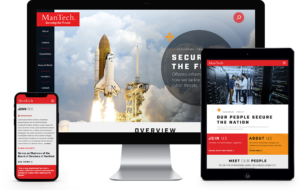
4. “We need to personalize the experience.”
Personalization is no longer reserved for B2C websites. The B2B sales cycle is long, often requiring many interactions and engagements over time. Repeat users are an opportunity to speak on a more personal level. The more data we capture about a user, where they come from, how and with what they interact, the more we can adjust a web experience. From imagery, messaging, journeys, iterative forms, and specific calls to action, personalization lets the user know you understand them. Personalization is not a ‘set it and forget it’ initiative. It requires technology, data, and iterative support over time, making it a daunting undertaking but one with a huge potential for return.
When we partnered with the Graduate Management Admission Council, we re-designed their microsite, CallingAllOptimists.com. Through collaborative field studies and research, Bluetext engineered a unique digital experience in the form of a personalized 4-question quiz. The quiz seamlessly guided the user to customized messaging and content based on their answers, while simultaneously gathering actionable user-insight which integrated directly to GMAC’s marketing automation platform. Not only did this redesign improve the campaign’s functionality and awareness – it created a holistic brand ecosystem that drove both the user and the client to their desired goal.
5. “We need to stand out.”
Ultimately, every brand wants to look cool. Every B2B company wants people to land on their site and think, “wow.” The very first thing a user takes in is the design. As a top digital design agency, we are constantly asked to be innovative and deliver a unique design unmatched by competitors. Bluetext often creates custom animations, illustrations, fonts, menus, forms, and imagery for clients. It’s critical that, while we can wander far from inside the box, we remain true to the brand. The balance of brand consistency and digital creativity can create the award-winning masterpiece many of our clients are after.
When Bluetext partnered with Varonis, we launched the eye-catching “Exposure” advertising campaign, targeting C-Level executives who are unaware of the potential risk they are placing on their enterprises by not leveraging solutions to understand who has access to the unstructured and human-generated data that their enterprise relies on.

6. “We need to cover our…selves.”
The legal landscape of the web is constantly changing. From data protection to inclusiveness, the C-Suite is recognizing the need for compliance to sleep easy at night. Beyond legal safety, these new requirements should be pursued because these rights aim to protect end-users. Digital marketers have a responsibility to make the internet a space for all users to experience equal comfort and access. From 508 to GDPR, your digital marketing agency should proactively implement these requirements as guided by your legal team.
Take for example our work with Level Access. When the SSB Bart Group, the leading provider of accessibility solutions and software, needed a new brand to increase its market share and continue on its growth trajectory, it chose Bluetext to deliver a new name, brand and website that would focus on its people and expertise. The new look and feel and how it is presented on the website reflects Level Access’ mission “to create a world where digital systems can be made readily accessible to users with disabilities—enabling digital technology to become a profound empowering force in their lives.”
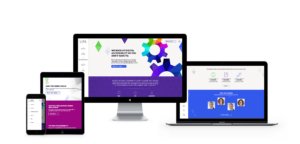
7. “We need to harness the full potential of our website.”
Websites have become full-fledged marketing and sales tools. One piece of a 360-degree user experience, websites are now a living, breathing, asset, working in tandem with other channels. Data should consistently inform website governance decisions and data from the website should be analyzed to inform other channels inversely. From tracking to chatting, integrations that connect websites to other marketing channels can exponentially augment what we know about our users. Our clients constantly ask how we can integrate with full-funnel efforts, from hosting events online to chatting with prospects in other languages, the potential is near limitless.
When Bluetext worked with ResMan, a property management platform, to invigorate their brand and redesign their website. ResMan charged Bluetext with repackaging their solutions into a strategic grouping that reflected the market’s needs. As a customer-centric brand, ResMan needed their external messaging and marketing efforts to reflect their goals as a company. Bluetext turned this request into a fully redesigned website, focusing on an enhanced UX that guides ResMan’s users through the site with an intuitive website flow.

All of these “needs” are important to consider, but it’s tough to nail them yourself unless you have unlimited time and budget. An experienced website design and UX agency, such as Bluetext, should guide you through these conversations when beginning a website project to determine what makes sense for your business’ goals and resources. At Bluetext, our goal is that one day a CMO will point to your website in a project kickoff as the bar for their “needs.”
It’s no surprise that video has taken the digital ad space by storm. It’s rare that you scroll your newsfeed or surf the web without being served an ad that is relevant to your specific interests. In 2019, 87% of marketing professionals were leveraging video in their media strategies and more than 80% of video marketers saw a stronger ROI than when they ran static banner ads or paid social image ads.
So, why are video ads so popular? And why should marketers continue to invest in video advertising in 2020?
Expanded Inventory
For starters, video inventory is incredibly robust. You can reach users across a variety of different platforms and sites – from social platforms to Connected TV devices. That’s right, you can now tailor ads to reach users while they’re streaming a show through their smart TVs. Marketers can also place video pre-roll ads across premium website inventory, along with video-specific platforms like YouTube, where ads play before or during video content that a user is viewing.
Video ad inventory has expanded across social platforms in the past few years as well, and the results have been significant. Platforms such as Instagram and Facebook see 49% higher interactions on video ads than with image ads. With such impressive engagement metrics, it makes sense that marketers are investing more of their media dollars into paid social video ads. In fact, paid social video ad spend accounted for 28.7% of all video ad spending in 2019 ($10.35 billion). This number is projected to grow to $12.48 billion in 2020.
Unique Ad Formats
The unique ad formats offered through video is another reason why marketers are investing more of their paid media budget into the medium. Sprout Social reports that marketers are increasing their digital video budget by 25% year-over-year due to the increase of new ad formats. For example, marketers are now leveraging Instagram stories to connect with users for :15 seconds through an immersive experience with a full-screen interactive video. In 2019, one-third of Instagram’s most-viewed stories came from businesses, and 20% of those stories drove users to directly message businesses.
Another evolving ad format that businesses are taking advantage of is YouTube’s 6-second bumper ad. YouTube bumper ads are non-skippable, and while quite short, marketers have been able to successfully story-tell through a sequence of these 6-second ads. Google Ads shares that “many large brands are using bumper ads to drive upper-funnel goals like ad recall and awareness…. [they] are a cost-effective way to reach your target audience, ensure your message is seen and heard, and keep you top of mind.”
As mentioned previously, the ability to target users through Connected TV (CTV) devices is a huge win for marketers. There is a shift happening between traditional TV and CTV; many households are ditching cable subscriptions and switching to subscriptions with streaming services such as Hulu, Amazon Prime and Apple TV to get their news and entertainment. By 2022, it’s projected that 35 million viewers will watch TV exclusively through streaming services. The result? Marketers are investing less in traditional TV commercials, and instead, putting those dollars behind non-skippable :15, :30 and :60 second CTV ads. The best part of CTV advertising is that you actually have access to ad data! With traditional TV, networks will provide projected impressions for running commercials during specific time slots; however, with CTV, you’ll know exactly how many users watched your ad, along with viewability metrics and insights into ad recall.
The Future of Video
While banner and image ads have seemingly run their respective courses, the future of video advertising looks promising. With new formats and campaign functions rolling out across platforms specifically for video, marketers should set aside a healthy media budget for testing new video opportunities in 2020.
One new practice that Google Ads recommends is to make your video and search ads work together. Google Ads states that marketers who run search and video together will experience a 45% higher lift in ad recall, and a 180% higher message retention. One brand, in particular, found that running video alongside paid search led to a 4x increase in branded search, and dropped their CPA by 70%.
Another new trend popping up across paid social is the use of live video. Marketers are investing in live video as a means of building trust and transparency with consumers. We’re used to seeing this trend across Instagram and Facebook Stories, and video-first platforms like Snapchat. However, some businesses are migrating live video to LinkedIn to help tell brand stories and to show followers the real people behind the company name. Live video is helping to break down walls and let users connect with businesses in a personal way.
Other new video opportunities coming our way are: shoppable video ads, augmented reality campaigns, new possibilities on IGTV and Facebook Watch, and so much more.
Bottom line: Invest in video advertising in 2020. You’ll be glad you did. Find out how Bluetext has leveraged video ads in successful go-to-market campaigns.
For a top marketing agency, trade shows are essential events to attend to learn all the tricks of the trade. It is usually a one time a year event where all the major industry players convene to learn about new products, network and promote their brands. It brings back old notions of experiential event marketing, but in 2020, brands are adding a digital twist. Now more than ever, companies are pairing their physical trade show presence with huge digital thumbprints, from hyper-targeted ads to Micro-Moments.
National Retail Federation (NRF) and their annual Big Show is a great example of how to do a trade show right. NRF’s Big Show is the largest retail conference and expo event, gathering over 40,000 attendees and 18,000 retailers from over 99 countries under one roof. Big Show capitalizes on Micro-Moments both before and during the show. By analyzing these tactics, we can learn how important Micro-Moments are for users and how to properly utilize them.

So what is a Micro-Moment? A Micro-Moment is an intent rich moment when an attendee uses their device to act on a need, including to know, to go, and to buy. The brilliance behind micro-moment marketing is that in the world today, consumers are bombarded by content everywhere they turn. Inc.com says the industry has reached a point of “content shock” where consumers are oversaturated and cannot consume any more content than they already are. Consumers spend an average of 4.7 hours each day on their smartphones, continually distracted and overstimulated. This only escalates the challenges marketers face to achieve consumers’ attention.

To combat the new challenges encountered with fragmented media interactions, top digital marketers have adopted a new mentality. This new philosophy zeroes in on distinct moments in the consumer buying process. The I-want-to-know moment, the I-want-to-buy moment and even the I-want-to-go moments.
Before the Show, NRF was strategic in focusing on the Micro-Moments of their target audiences’ “I-want-to-know” and “I-want-to-buy” moments through the use of various paid media tactics. Through the use of paid social, NRF increased brand awareness and utilized the “I-want-to-know” moment of users. Before driving users to register for the event, it’s crucial to make them aware of the brand, educating them about the event, as well as driving upper funnel traffic down the line. Paid display is where lower funnel traffic acts upon the “I-want-to-buy” moment. Paid display not only helps to generate qualified leads but also drives registrants.

During the Show, the various speakers and topics expanded upon Micro-Moments as well. A huge focus of sessions was on how to drive better experiences, better content and better strategy for consumers. There are various innovative technologies and solutions companies can utilize, as seen in the Innovation Lab and Startup Zone, that can help improve the user experience for customers in every stage of their individual Micro-Moments. Opening speaker, Satya Nadella, CEO of Microsoft, expanded upon this during his keynote session on the first day of the show. Nadella focused on how companies need to focus on the future of the retail industry, upcoming trends and how to utilize technology to transform how companies operate, are marketed and relate to consumers. By doing so, these Micro-Moments for users will be more memorable and excite consumers to change from “I-want-to-know” to “I-want-to-buy.” To see the full list of speakers, visit the NRF Speakers Page and check out the NRF Big Show 2020 recap for a full list of articles, videos, session presentations and more.
A key takeaway from NRF’s Big Show 2020 was the importance of personalizing and concentrating the customer experience in the digital era. Staying true to the NRF Vision, the National Retail Federation has acted as the eyes and ears of the retail industry. For over 100 years they have brought together important leaders from top retail companies and are the only organization committed to bringing critical foresight and insight to leaders, movers and makers.

Leading by example is an understatement, as the organization itself has been ahead of the curve in their paid media tactics and lead generation strategy. To learn more about the NRF media strategy, check out their Bluetext Hall of Fame.
When it comes to building or remodeling your company’s website, partnering with a top website design firm is essential. By hiring a leading website design firm, you get to work directly with experts, maximize the utility of your team’s resources, get access to the latest technology, and so much more. Having a professional, user-friendly website can make all the difference when it comes to acquiring new clients and retaining old ones. Prospective customers will appreciate an enhanced user experience and will be reassured by the legitimacy of your company. Read Bluetext’s top 4 reasons to work with an expert website design firm.
1. Make a Lasting First Impression
At Bluetext, each website we build or remodel goes through a strict quality assurance process to ensure every page functions properly and looks perfect. Our team of coders, developers, and designers evaluate both the UI and UX of the site, validate all links and forms within the site, and ensure that each page follows brand guidelines – but that’s just to name a few of the steps in our process.
When it comes to your website, we know that first impressions are incredibly important. In fact, it only takes users 50 milliseconds to form an opinion on your website and decide if they will stay or leave. Not to mention, over 35% of users will leave a website if they find it unattractive. With a leading web agency, you can rest assured that your website will not only look good but is also easy to use.

2. Optimize Your Website’s Loading Speed
One of the most essential ways to make a positive first impression on users is by having a website that loads quickly. As a website design firm, our team of web analysts will assist with file compression and code optimization, enhance time to first byte, evaluate HTTP requests, and everything else in between, ensuring that your site loads as fast as possible.
About half of web users expect websites to load in less than two seconds and will leave if a website takes any longer than three. If your website drives $100,000 in revenue per day, increasing your loading speed by one second could help increase your daily revenue by 7%. A leading web agency will ensure that no potential customers are lost due to site speed.
3. Ensure Your Site’s Accessibility
At Bluetext, all engagements go through our team of accessibility experts to ensure you are publishing in compliance with the newest WCAG AAA standards. With well over half of the world on the internet, it’s vital to ensure that there are no barriers to access your website for individuals with any disability.
4. Create a Successful Campaign
Through different channels such as social media, mobile applications, search engines, and display networks, businesses can get their names in front of countless users. Meeting the ever-changing requirements of those channels, however, has become increasingly difficult. Not to mention, most every country has different advertising requirements, adding another layer of complication for those interested in advertising outside of the United States.
A website design firm, like Bluetext, can not only help you run global ad campaigns but can help you build the perfect landing page for users to see when they click on your ads.

If you’re looking to hire a leading web agency, see what Bluetext can do for you.
Programmatic Advertising – No Signs of Slowing Down in 2020
If you spend any time at all surfing the web, you have encountered some form of programmatic advertising. The video ad that plays before you stream your favorite TV show? Programmatic. The banner ad that appears alongside the cooking recipe you’re reading? Programmatic. The sponsored article content that shows up as you’re scanning your favorite news site? You guessed it – it’s programmatic.
Programmatic Advertising – What is it?
Programmatic ad buying is the use of software to purchase digital advertising in real-time, as opposed to the traditional ad buying process that involves RFPs, human negotiations, and manual insertion orders. It allows digital agencies like Bluetext to strategically select where we want to show display, video and native ads, and when.
A huge benefit of programmatic advertising is that the software grants advertisers access to the biggest data providers in the game. Not only are we choosing where and when to show ads online, but we have the capabilities to choose who actually sees our ads. Advertisers are able to hand-select from thousands of audience segments collected by these data providers and layer those segments onto programmatic campaigns.

Why Invest in Programmatic?
While targeting capabilities and ease-of-use are two major benefits of investing in programmatic advertising, there are a number of reasons why digital agencies should hop on the programmatic bandwagon in 2020.
Here are Bluetext’s top 3 reasons for investing in programmatic advertising in 2020:
1. Artificial Intelligence (AI) and Machine Learning
Programmatic advertising already makes digital ad buying easier for advertisers than it ever was before, but AI and machine learning have simplified the process even more. For years, media buyers and digital marketers relied on a manual process to review campaigns, manage budgets, make adjustments to ad creative, and more. However, AI and machine learning have become so sophisticated that the manual days of optimizing are nearly over. Once your campaign has launched, the AI will start to learn what’s working and what’s not, shifting budgets and making adjustments to enhance efficiency in real-time. Studies show that by 2035, AI will boost productivity and profitability by nearly 40%.
As a leading digital marketing agency, Bluetext has seen the benefits of AI and machine learning pay off in major ways. Not only is our digital marketing team more efficient, but the results we were able to drive for clients in 2019 far exceeded their goals. With AI and machine learning only becoming smarter, Bluetext is equipped to reach new heights with programmatic advertising in 2020.
2. Digital Out of Home (DOOH) Opportunities
Digital Out of Home (DOOH) advertising is a unique marketing channel that allows advertisers to reach users outside of their homes in digitally-displayed spaces. Though DOOH media isn’t new, it’s expected to grow exponentially in the coming years. Reports show that between 2016 and 2023, the DOOH media channel will grow from $3.6 Billion to $8.4 Billion.
With the average person spending 70% of their time outside of their home, investing in DOOH in 2020 is a no-brainer. From mobile geofencing to digital billboards, the opportunities to reach people on-the-go are vast. Most importantly, because DOOH is now offered through programmatic platforms, advertisers will have access to significantly more data from DOOH advertising than ever before.
Digital marketing agencies like Bluetext now have the ability to measure results from a digital billboard ad or an animated kiosk through the data and technology programmatic tools provide. Bluetext is looking forward to expanding DOOH capabilities in 2020 to connect the dots from in-home browsing to in-store purchasing.
3. Multi-Channel Advertising
In the past, advertising agencies had to leverage several different platforms, media vendors and direct buys to ensure they reached their audiences across all mediums. Programmatic advertising has simplified this process so that marketing agencies like Bluetext can execute all advertising efforts through one simple-to-use platform.
Programmatic solutions include paid social, display, video pre-roll, native advertising, geofencing, DOOH, connected TV and more. Digital marketing agencies like Bluetext now have the capability to run one digital campaign across all different mediums and – most importantly – track user behavior across all touchpoints. With AI and machine learning, programmatic campaigns will optimize to reach users at the right time on the right medium, whether that’s on the computer, on their smart TV, or in a store on their mobile device. In 2020, it’s expected that even more multi-channel solutions will be announced, such as voice-activated ads powered through devices like Alexa and Siri.

Programmatic advertising has opened the door for digital marketing agencies like Bluetext to effectively run and execute campaigns across a number of channels and mediums, making media dollars more efficient than ever before. With the expansion of programmatic solutions in 2020, there’s no limit to the number of possibilities Bluetext will be able to leverage to drive digital media success for our clients. To learn more about our work with programmatic advertising contact us.
Bluetext is honored to announce that Creative Director and Co-Founder Jason Siegel has been named a Judge for The FWA website awards, one of the oldest and most prestigious awards programs for website design in the industry. First launched in 2000 as the Favourite Website Awards in the UK, FWA has grown into the global leader in identifying and recognizing the best in website design. FWA remains an independent voice in the world of website design and build, recognizing the top talent across the globe and highlighting the trends and technologies that are driving website experience and results.
FWA’s Judges represent the top of the industry and come from more than 35 countries. As FWA explains on its website, “FWA is where you go to experience cutting-edge innovation in digital design and development. It’s a space that encourages the digital industry to push the boundaries of technology, to show people what is possible.”
For Bluetext’s clients, Jason being a part of the FWA Global Judge Panel means more access to the most cutting-edge designs and talent in desktop and mobile websites, mobile apps, virtual and augmented reality projects, and any creative work that pushes the boundaries.
Q&A
Why is website and UX design so important to brands and other organizations as part of their tools to build engagement with customers and other audiences?
JS: Website design and UX design is so important because it’s the #1 brand touchpoint for the customer. If done well, the digital channel, whether a responsive website, an app or an installation, can create the greatest upside with the customer and be a voracious capture-agent for user data.
What do you look for in websites that you are evaluating?
JS: In my role, I am looking for pixel-perfect execution and production consistently throughout the whole UX. I am looking for superb in-browser performance, mixed with lite-weight code, mixed with fantastical motion effects.
How should website designers weigh the look of a website versus its ability to convert visitors to customers? In other words, how do you balance style versus effectiveness?
JS: When brands live and die by their short-term conversion rates, it does allow them to stay alive and thrive while building a customer base. However, once a brand establishes itself and the many channels the brand lives on drive revenue and stabilize the brand for the long-term, it starts to get more interesting. We then look at richer experiences, more higher-level positioning, and deeper brand engagement. While this often doesn’t convert faster in the short term, it does position the brand in new pricing categories, more accurate market positioning, and greater revenues and market share overall.
Driving engagement and other key metrics through organic social media is often an important component of a marketing campaign that targets business executives as its target audience. It complements any paid social or media, helps build awareness, and motivates target audiences to click through to a website or other campaign assets.
The question is, how do you determine the best timing in order to get the best results? This is especially tricky, given the short shelf-life of a Tweet, a Facebook post, or a LinkedIn feed. There are many myths regarding when to post organic social to drive the best results for a marketing campaign. Most of them are based on old, out-of-date assumptions, or gut instinct. Bluetext decided to test these to get hard data behind our campaigns.
The Old Common Wisdom on Social
There are some older pieces of conventional wisdom that have become ingrained in practitioners and that date back a dozen or so years to when social media campaigns were relatively new. Here are a couple that seem to make sense, but that we thought might be outdated given today’s “always-on” business culture:
- Don’t post on Mondays or Fridays. On Mondays, people are busy getting ready for the week and are likely to miss the posts. On Fridays, people are leaving early or checking out for the weekend. And never expect them to engage over their busy weekends.
- Avoid first thing in the morning and late in the day. It’s better to try other times when your target market isn’t so busy or trying to clear out of the office to get home.
Why We Wanted to Test Those Assumptions
Ultimately, we weren’t convinced that the older conventional wisdom was still valid. People work more flexible hours now than previously and are on-line and multi-tasking on a regular basis. Here at Bluetext, we wanted to get real data for ourselves so we could make the best recommendations for our clients.
How We Designed the Test
Working with a large client whose target audiences include business executives in the retail space, Bluetext designed a test that would send out social posts across three platforms where the client has a significant presence and following:
We did this over a four-week period, sending out those posts at a different time of day each week. For Facebook and LinkedIn, we also send out posts on different days of the week to see if and how that might make a difference. We looked at re-posts, replies, likes and link clicks.
The Results
Contrary to the conventional wisdom, the best results for the test’s Tweets were for those posted at 9:00 am and pm weekdays, outperforming those sent at 8:00 am, noon, or mid-afternoon.

The best results for LinkedIn were for those posted at noon on Tuesdays and Thursdays but other positive results for 9:00 am on Wednesdays and Saturdays.
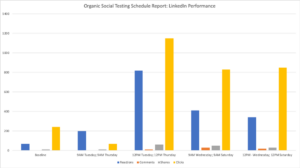
For Facebook, the best results came at noon on Tuesdays, Wednesdays, Thursdays & Saturdays.
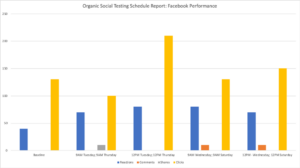
How to Leverage This New Data
Focus social posts around those best times and dates for each platform, but don’t ignore the other times or days of the week. Although posting content during “off-hours” might not deliver as much engagement, they will help to build awareness.
 Optimize Often
Optimize Often